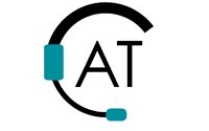Step 4.13
Complete business case using data gathered in prior steps and stages.
Primary findings
Secondary findings
Primary findings
Carriers
Face-to-face contact helps overcome documentation constraints that might preclude a laboratory technologist or acquisition development specialist from elaborating about possible impediments, if any, to successful transition.
Interviews with senior personnel.
(View full citation)
Methods
It is important to collect and assess market and competitive information in order to understand customer needs, wants and specifications for the product; to know customers' price sensitivity; to understand customers' purchase decisions; and to learn about competitors' strategies, strengths and weaknesses.
Case studies conducted on over 600 new product launches in the U.S. and in China.
(View full citation)
Market Predictability as a category had the highest correlation with product success. It was comprised of the following four statements: 1) The customers needs were well defined; 2) The customer's needs could be readily into product performance specifications; 3) We were completely familiar with the market; 4) We could accurately forecast demand for this product.
A balanced sample of 62 success products and 62 failure products drawn from 31 hi-tech firms, were analyzed via questionnaire and case study interviews.
(View full citation)
Marketing Skills and Resources as a category had the second highest correlation with product success. It was comprised of the following six statements: 1) Our market research skills were at ideal level for this product; 2) Our perceived marketing expertise in this project area was very high; 3) Our marketing skills were at ideal level for this project; 4) Our forecast of the market demand for this product was accurate; 5) There was a close fit between our marketing skills and the needs of this project; 6) Our predictions about customer requirements were accurate.
A balanced sample of 62 success products and 62 failure products drawn from 31 hi-tech firms, were analyzed via questionnaire and case study interviews.
(View full citation)
Organizations should have coherent administrative procedures, including information-gathering systems reviewing new opportunities; flexible capital budgets that extend beyond two years; up-to-date capital budgeting manuals; full time capital budgeting staff; regular reviews of hurdle rates; and a capital appropriation committee to vet projects.
Survey with significant findings.
(View full citation)
Performance Drivers: One is the Quality of Execution. Eight activities distinguish best from worse performers: 1) Conducting a post-launch review (8.2); 2) Assessment of product's value to business (2.1); 3) Test market or trial sell to a limited set of customers (7.13); 4) Concept testing to determine customer reaction to product and gauging purchase intent before Development begins (4.11); 5) Idea Generation (1.3); 6) Customer tests of products under real-life conditions (6.3); 7) Detailed market study/research or Voice of the Customer (4.3, 4.13); 8) Pre-launch business analysis (7.7, 7.8, 7.9).
A quantitative survey of 105 business units, supported by team's experience in NPD modeling, consultation, application and analysis.
(View full citation)
Sound evaluation methods are needed for new product success, including strategic screenings of new product proposals; utilization of market research; and primary and secondary valuation using a variety of methods such as net present value or Payback.
Survey with significant findings.
(View full citation)
The firm involved in NPD should consider its ability to conduct the necessary work from three perspectives: 1) Paths — the future options still open given the constraints introduced by previous choices such as mergers and or acquisitions of resources; 2) Positions — the assets of the organization in terms of ownership, technology, industrial systems, finance, organizational structure, market position and organizational boundaries. 3) Processes — management and organizational mechanisms which enable co-ordination and integration, learning and reconfiguration.
Case studies of five firms.
(View full citation)
Thorough business planning at the beginning of an NPD project creates a basis for proficient project and risk planning. Business planning proves to be an important antecedent of the more development-related planning activities.
Analysis of data collected from 132 NPD projects.
(View full citation)
Utilization of market research early in the new product development process, and continuing throughout the entire development phase is critical to ensuring success.
Survey data.
(View full citation)
Tips
Higher levels of sophistication in capital budgeting are associated with new product development success.
Survey with significant findings.
(View full citation)
Secondary findings
Barriers
Despite an abundance of academic and scientific expertise, biotechnology firms suffer from a lack of management skill and knowledge. This lack of skills and knowledge impacts on the firm’s ability to manage NPD as well as to secure the funding required for sustained performance.
Source: Ernst_&_Young (2001), Department of Industry Science and Resources and Ernst & Young (1999). In: Frahm, J., Ireland, D.C., & Hine, D. (2007)
Financial evaluation dilemma- Flimsy data may result in the elimination of potentially successful projects. However, failure to evaluate at an early stage (using any and all available data) results in new product development failure.
Source: Hayes & Abernathy, 1980; Hayes & Garvin, 1982; Pearson, 1986. In: Neale, C.W. (1994)
